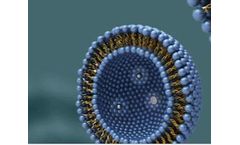Particle Sizing Articles & Analysis: Older
43 articles found
Dynamic Light Scattering (DLS)(1) PrincipleDLS measures the rate of particle movement in solution, thereby inferring the distribution of particle sizes, and can be used to monitor changes in the aggregation state of proteins.(2) OperationMeasure the DLS data of the collagen solution at different temperatures. As the temperature increases, ...
Gel Permeation Chromatography (GPC)This method uses gel as a stationary phase to separate and measure the molecular weight of collagen based on differences in molecular size and shape.2. Mass Spectrometry (MS)Mass spectrometry is a highly accurate technique that can be used to determine the exact mass of protein molecules. ...
This technology involves the use of microscopic particles to deliver drugs in a controlled and sustained manner over an extended period of time. ...
Our microspheres feature uniform particle sizes, stable and controllable surface functional groups and excellent experimental reproducibility. ...
As a drug carrier, PLGA is soluble in common solvents such as acetone and ethyl acetate. The size, shape and surface area of PLGA nanoparticles can be adjusted by adjusting the molecular weight and ratio of lactic acid and glycolic acid in the polymer to obtain the required nanocarriers are simultaneously processed and prepared into various shapes and sizes. ...
Granularity Aluminum adjuvants typically consist of primary nanoparticles that form irregularly shaped aggregates ranging in size from 1 to 20 μm. Particle size and shape are important for the efficiency of particle uptake by immune cells through phagocytosis. Particle size can be determined ...
PEG modification can increase particle size, shield negative charge, and reduce cytotoxicity, thus avoiding nuclease degradation and renal clearance of siRNA in vivo as well as reducing toxicity in vivo. ...
In nano-flow cytometry (nfCM), a sample of cells or other particles is passed through a laser beam. A number of photodetectors detect the light that is scattered off of the particles by the laser beam. A histogram of the particle sizes and light scattering characteristics is produced using the photodetectors' data. ...
It is a crucial parameter that directly impacts the therapeutic efficacy of the drug delivery system. Particle size distribution is another vital parameter that determines the physical characteristics of the microcapsules. A narrow particle size distribution ensures uniformity, which is essential for consistent drug release. ...
Microspheres are small spherical entities formed by dispersing or adsorbing drugs in a polymer matrix. The particle size is typically between 1 μm and 250 μm, and the largest can reach more than 800 μm. ...
The resulting image is shown in Figure 1.It is clear from the Raman image of the emulsion and the corresponding spectra, Figure 2, that there are 3D oil particles (red) of various sizes dispersed within a continuous aqueous phase (blue). In areas where there are oil particles, there is a series of high-intensity bands between 2800 cm-1 and 3000 ...
Nano-Drug Carrier of Chitosan Nano-drug carriers generally refer to drug carriers whose particle size is in the nanometer size (1-100 nm) or composed of nano-sized materials. ...
They are bimolecular vesicles that form spontaneously when phospholipids are dispersed in water. Liposomes vary in size, composition and charge and can be used as carriers for a wide range of drug molecules, such as chemotherapeutic agents, antimicrobial and antiviral drugs, antiparasitic drugs, genetic material, vaccines, therapeutic proteins, and anti-inflammatory agents. ...
Challenges of Liposomes as Drug Delivery Vehicles l The cost of excipients and equipment required for liposome preparation is relatively high, resulting in the cost of liposomal formulations being higher than that of many other dosage forms. l Cationic liposomes may be highly toxic when high doses are required for treatment. l One drawback of liposomal formulations loaded with anticancer drugs is ...
Cell-penetrating peptides (CPPs) are short peptides that facilitate cellular intake and uptake of molecules ranging from nano-size particles to small chemical compounds to large fragments of DNA. ...
Following the coronavirus emergency, surgeries and medical offices shall be reorganised to work safely. One of the first safety measure to adopt concerns suction of aerosol potentially infected. ...
ByAirsafe
It is a water-soluble white powdery polymer with a particle size of about 10nm in solution and can be stored at room temperature. ...
Physical and chemical properties and dosage of excipients The physical and chemical properties of active pharmaceutical ingredient excipients (including molecular weight and its distribution, degree of substitution, viscosity, properties, particle size and the change of its distribution, fluidity, moisture, pH value, etc.) will affect the quality of the ...
Changes in the excipient’s physical and chemical properties may affect the quality of the preparation in terms of viscosity, particle size and distribution, fluidity, moisture, pH, etc. For the polymer materials used in sustained and controlled release formulations, changes in molecular weight and viscosity may have a significant impact on the release ...
The following two methods are based on the degradation rate and the influencing factors related to the degradation rate. When the sample size is small, the degradation rate is most suitable for early development; when the sample size and time interval contain more data, the corresponding time of the impact factors related to the degradation rate is most suitable ...











